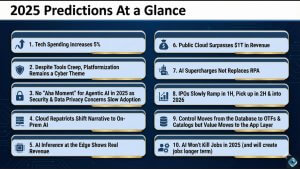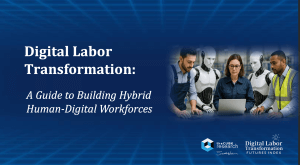We estimate Google’s overall cloud business will hit $64B in 2025, with more than 50% of that revenue coming from Google Cloud Platform (GCP). GCP is growing at a rate faster than AWS and Azure and is finally throwing off an operating profit of around 16% of revenue. This compares to AWS’s operating profit in the mid-to-high 30’s and we believe Azure’s operating profit is comparable to that of AWS. While Google’s profitability is notably lower, its AI business has been a clear tailwind for its cloud business.
In today’s 2025 Google Cloud Next keynote, Thomas Kurian, Sundar Pichai and other executives, including a pre-recorded cameo from Jensen Huang, laid out the case for Google’s full stack, AI ready infrastructure as the best place to run enterprise AI workloads.
What follows is a summary of the key highlights from the keynote based on our notes and publicly available material from Google.
Driving AI-Powered Transformation: Key Insights from Google Cloud Next
Google Cloud Next offered a glimpse into a future shaped by advanced infrastructure, cutting-edge AI models, and a commitment to making AI innovation accessible worldwide. The announcements—ranging from new TPU generations to multi-modal generative capabilities—reinforced Google’s position as a leader in delivering end-to-end AI solutions for enterprises, developers, and consumers alike. We believe that the combination of specialized hardware, robust software, and open, interoperable platforms is creating unprecedented opportunities for digital transformation.
Expanding Global Infrastructure
42 Regions, 2M Miles of Subsea Cables, and $75B CAPEX by 2025
Google is on track to build one of the world’s most extensive global networks, with 42 cloud regions and more than two million miles of terrestrial and subsea cables already in place. To meet rising AI demand, Google plans to invest a total of $75 billion in CAPEX by 2025, scaling its infrastructure—data centers, servers, and advanced networking—to deliver near-zero latency performance. The data suggests this massive investment underscores how AI services can only move as fast as the underlying compute and network resources permit.
Cloud WAN for Enterprise
A particularly notable highlight is Cloud WAN, now available to all Google Cloud customers. It leverages Google’s global private network, which operates at “Google speed” for billions of users worldwide. In our opinion, enterprises will benefit from up to 40% lower latency and up to 40% reduction in total WAN costs, enabling real-time data exchanges and robust cloud connectivity.
Seventh-Generation TPU: Ironwood
A New Era of Specialized Hardware
In a significant hardware announcement, Google unveiled its seventh-generation Tensor Processing Unit (TPU), codenamed “Ironwood,” offering over 42.5 exaflops per pod with more than 9,000 chips. Compared to the first TPU, our research indicates Ironwood delivers 3,600X higher performance over an eight-year span, reflecting Google’s relentless focus on domain-specific hardware for AI training and inference. The data suggests this will drive new levels of efficiency, particularly for next-generation “thinking models” like Gemini 2.5.
Flexibility and Open Software
We believe that specialized hardware is only as powerful as the surrounding system. Hence, Google is emphasizing “hypercomputer” concepts, allowing for flexible consumption models, open software standards, and an easy migration path as new TPU generations come online. This philosophy extends to NVIDIA GPUs, with new A4 and A4X VMs, plus upcoming Vera Rubin GPU offerings—all aiming to give businesses optimal choice for their AI workloads.
Gemini: Thinking Models for a Multi-Modal Future
Gemini 2.5 Pro & Flash
Gemini continues is the heart of Google’s AI advancements. Building on the momentum of Gemini 2.0, Google released Gemini 2.5 Pro and announced Gemini 2.5 Flash. In our opinion, the Pro version targets precision use cases (such as advanced code debugging and intricate data extraction), while Flash optimizes for ultra-low latency, making it ideal for real-time, high-volume scenarios. Both models demonstrate “thought chaining,” meaning they can reason through multiple steps before giving an answer.
Video, Audio, and Multimodal Experiences
Google also highlighted Veo 2 for video generation, Imagen 3 for text-to-image, Chirp 3 for audio, and Lyria for text-to-music—illustrating what we believe is a sweeping move toward multi-modal AI capabilities. These new offerings allow organizations to generate, edit, and manage everything from inpainting and outpainting in videos to customizing brand voices with only 10 seconds of audio training.
Enterprise-Ready AI
Vertex AI: 20x Growth and Billions of API Calls
Vertex AI remains Google’s primary hub for model training, tuning, deployment, and orchestration. The data suggests Vertex AI usage has surged 20x over the last year, reflecting companies’ growing demand for generative AI across text, image, video, and audio. In our view, expanded connectors allow developers to ground models with enterprise data from any source—cloud, on-premises, multi-cloud, or specialized databases—without losing ownership of their proprietary information.
Multi-Agent Ecosystem
Our research indicates that Google is committed to enabling multi-agent systems through the Agent Development Kit (ADK) and the new Agent2Agent (A2A) protocol. These open frameworks let organizations orchestrate multiple specialized agents to collaborate, each handling domain-specific tasks such as coding, research, security triage, and advanced data analysis. In our opinion, this shift to a multi-agent approach is transformative, allowing for dynamic coordination that can amplify productivity and decision-making speed.
Employee Productivity with Agentspace and Workspace
Agentspace for Every Employee
Google’s internal AI environment, known as Agentspace, integrates advanced search, conversational AI, Gemini, and third-party agents to help employees find information, automate workflows, and collaborate more efficiently. We believe that equipping every worker with robust AI tools can rapidly accelerate productivity across the organization.
Google Workspace Upgrades
From “Help Me Analyze” in Sheets to audio overviews in Docs, Workspace is harnessing Gemini to provide more than two billion monthly AI assists. The data suggests these features streamline daily tasks—like approvals, scheduling, and summarization—allowing teams to focus on higher-level work.
Industry-Specific AI Agents
- Customer Agents – Transforming contact centers, retail experiences, and self-service support with near-human intelligence.
- Creative Agents – Producing marketing campaigns, short videos, and localized content at scale.
- Data Agents – Enabling advanced analytics in BigQuery, orchestrating AI-driven pipelines for faster insights.
- Coding Agents – Handling tasks from code generation to project management, integrated with GitHub Copilot, Replit, and more.
- Security Agents – Defending enterprises by automating threat investigation, malware analysis, and alert triage at scale.
In our opinion, each of these agent categories will become even more critical as organizations look to embed AI into every workflow, from creative ideation to real-time cyber defense.
Commitment to Openness and Partnership
We believe one of the most compelling aspects of Google Cloud’s strategy is its openness. The data suggests that enterprises want the flexibility to connect their data—no matter where it resides—to best-in-class AI and application services. Google is meeting this demand through multi-cloud networking, strategic ISV partnerships, sovereign cloud options, and a robust ecosystem of integrators such as Accenture, Deloitte, and TCS.
Looking Ahead
In our opinion, the announcements at Google Cloud Next confirm a clear trajectory: AI models are becoming more capable, multi-modal, and integrated into every facet of the enterprise. Coupled with Google’s vast infrastructure investments, from Ironwood TPUs to Cloud WAN, the possibilities for scaling AI across industries are enormous. Our research indicates AI has been a tailwind for GCP adoption as organizations continue to turn to Google Cloud for everything from building basic chatbots to orchestrating multi-agent systems that tackle highly complex tasks. It’s data stack is one of the most capable in the industry and we believe it confers advantage for Google.
Ultimately, the our assessment is Google Cloud’s vision hinges on three pillars: 1) Powerful AI-optimized hardware; 2) Opem software; and 3) An enterprise-ready platform that addresses sovereignty, compliance, and intellectual property requirements. We believe that as AI continues to expand and mature, these pillars will remain critical to helping businesses achieve transformative outcomes.
Bottom Line
The future of AI lies in the fusion of powerful “thinking models” like Gemini with enterprise-grade hardware and software. By focusing on scale, flexibility, and interoperability, Google Cloud appears poised to spearhead the next wave of global AI adoption—offering the speed, intelligence, and reliability that modern organizations demand.



